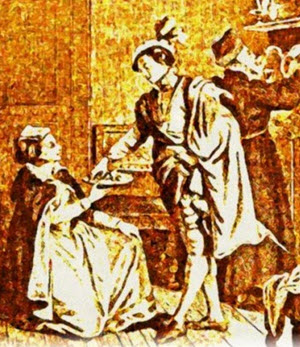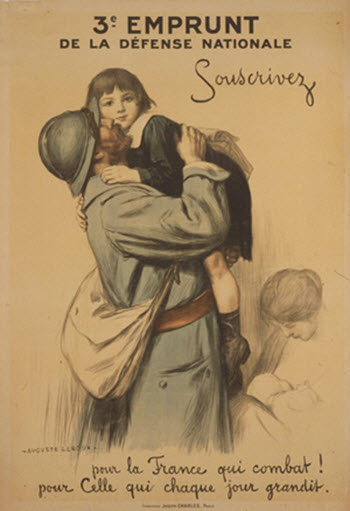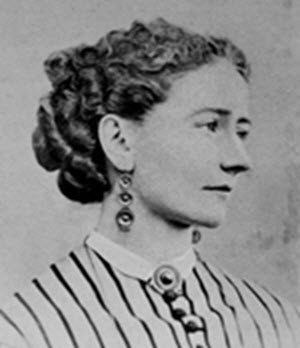Home > Secret Rooms and Hiding Places > >
Chapter: [1] [2] [3] [4] [5] [6] [7] [8] [9] [10] [11] [12] [13] [14] [15] [16] [17]
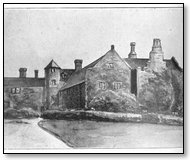
INGATESTONE HALL, ESSEX
HARVINGTON, UFTON, AND INGATESTONE
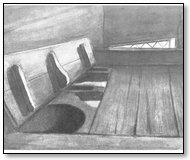
PRIEST'S HOLE, SAWSTON HALL
We will now go in search of some of the most curious hiding-places in existence. There are numerous known examples all over the country, and perhaps as many again exist, which will preserve their secret for ever. For more than three hundred years they have remained buried, and unless some accident reveals their locked-up mysteries, they will crumble away with the walls which contain them; unless, indeed, fire, the doom of so many of our ancestral halls, reduces them to ashes and swallows up the weird stories they might have told. In many cases not until an ancient building is pulled down are such strange discoveries made; but, alas! there are as many instances where structural alterations have wantonly destroyed these interesting historical landmarks.
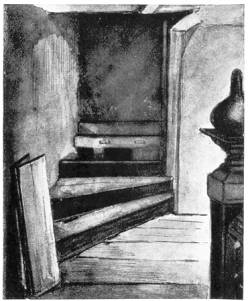
ENTRANCE TO "PRIEST'S HOLE," HARVINGTON HALL

HARVINGTON HALL, WORCESTERSHIRE
Unaccounted-for spaces, when detected, are readily utilised. Passages are bodily run through the heart of many a secret device, with little veneration for the mechanical ingenuity that has been displayed in their construction. The builder of to-day, as a rule, knows nothing of and cares less, for such things, and so they are swept away without a thought. To such vandals we can only emphasise the remarks we have already made about the market value of a "priest-hole" nowadays.
A little to the right of the Kidderminster road, and about two miles from the pretty village of Chaddesley Corbet, with its old timber houses and inn, stands the ghostly old hall of Harvington. The ancient red-brick pile rises out of its reed-grown moat with that air of mystery which age and seeming neglect only can impart. Coming upon it unexpectedly, especially towards dusk, one is struck with the strange, dignified melancholy pervading it. Surely Hood's Haunted House or Poe's House of Usher stands before us, and we cannot get away from the impression that a mystery is wrapped within its walls. Harvington Hall dates from the reign of Henry VIII., but it has undergone various changes, so it is difficult to affix any particular period or style to its architecture; indeed, it is this medley of different styles which forms such a poetically picturesque outline. In its day Harvington could doubtless hold its own with the finest mansions in the country, but now it is forgotten, deserted, and crumbling to pieces. Its very history appears to be lost to the world, as those who go to the county histories and general topographical works for information will find.
Inside the mansion, like the exterior, the hand of decay is perceptible on every side; the rooms are ruined, the windows broken, the floors unsafe (excepting, by the way, a small portion of the building which is habitable). A ponderous broad oak staircase leads to a dismantled state-room, shorn of the principal part of its panelling, carving, and chimney-pieces.[1] Other desolate apartments retain their names as if in mockery; "the drawing-room," "the chapel," "Lady Yates's nursery," and so forth. At the top of the staircase, however, we must look around carefully, for beneath the stairs is a remarkable hiding-place.
[Footnote 1: Most of the interior fittings were removed to Coughton Court, Warwickshire.]
With a slight stretch of the imagination we can see an indistinct form stealthily remove the floorboard of one of the stairs and creep beneath it. This particular step of a short flight running from the landing into a garret is, upon closer inspection, indeed movable, and beneath gapes a dark cavity about five feet square, on the floor of which still remains the piece of sedge matting whereon a certain Father Wall rested his aching limbs a few days prior to his capture and execution in August, 1679. The unfortunate man was taken at Rushock Court, a few miles away where he was traced after leaving Harvington. There is a communication between the hiding-place and "the banqueting-room" through, a small concealed aperture in the wainscoting large enough to admit of a tube, through which a straw could be thrust for the unhappy occupant to suck up any liquid his friends might be able to supply.
In a gloomy corridor leading from the tower to "the reception-room" is another "priest's hole" beneath the floor, and entered by a trap-door artfully hidden in the boards; this black recess is some seven feet in depth, and can be made secure from within. Supposing the searchers had tracked a fugitive priest as far as this corridor, the odds are in favour that they would have passed over his head in their haste to reach the tower, where they would make sure, in their own minds at least, of discovering him. Again, here there is a communication with the outside world. An oblong aperture in the top oak beam of the entrance gateway to the house, measuring about four inches across, is the secret opening—small enough to escape the most inquisitive eye, yet large enough to allow of a written note to pass between the captive and those upon the alert watching his interests.[1]
[Footnote 1: N.B.—In addition to the above hiding-places at Harvington, one was discovered so recently as 1894; at least, so we have been informed. This was some years after our visit to the old Hall.]
A subterranean passage is said to run under the moat from a former hiding-place, but this is doubtful; at any rate, there are no evidences of it nowadays.

UFTON COURT, BERKSHIRE

GARDEN TERRACE, UFTON COURT
Altogether, Harvington is far from cheerful, even to a pond hard by called "Gallows Pool"! The tragic legend associated with this is beyond the province of the present work, so we will bid adieu to this weird old hall, and turn our attention to another obscure house situated in the south-east corner of Berkshire.
The curious, many-gabled mansion Ufton Court both from its secluded situation and quaint internal construction, appears to have been peculiarly suitable for the secretion of persecuted priests. Here are ample means for concealment and escape into the surrounding woods; and so carefully have the ingenious bolts and locks of the various hiding-places been preserved, that one would almost imagine that there was still actual necessity for their use in these matter-of-fact days!
A remarkable place for concealment exists in one of the gables close to the ceiling. It is triangular in shape, and is opened by a spring-bolt that can be unlatched by pulling a string which runs through a tiny hole pierced in the framework of the door of the adjoining room. The door of the hiding-place swings upon a pivot, and externally is thickly covered with plaster, so as to resemble the rest of the wall, and is so solid that when sounded there is no hollow sound from the cavity behind, where, no doubt the crucifix and sacred vessels were secreted.

HIDING-PLACE, UFTON COURT
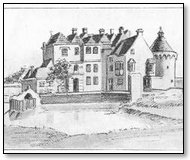
SCOTNEY CASTLE, SUSSEX

HIDING PLACE, UFTON COURT
Not far off, in an upper garret, is a hiding-place in the thickness of the wall, large enough to contain a man standing upright. Like the other, the door, or entrance, forms part of the plaster wall, intersected by thick oak beams, into which it exactly fits, disguising any appearance of an opening. Again, in one of the passages of this curious old mansion are further evidences of the hardships to which Romish priests were subjected—a trap in the floor, which can only be opened by pulling up what exteriorly appears to be the head of one of the nails of the flooring; by raising this a spring is released and a trap-door opened, revealing a large hole with a narrow ladder leading down into it. When this hiding-place was discovered in 1830, its contents were significant—viz. a crucifix and two ancient petronels. Apartments known as "the chapel" and "the priest's vestry" are still pointed out. The walls throughout the house appear to be intersected with passages and masked spaces, and old residents claim to have worked their way by these means right through from the garrets to the basement, though now the several hiding-places do not communicate one with another. There are said to be no less than twelve places of concealment in various parts of the building. A shaft in the cellar is supposed to be one of the means of exit from "the dining-room," and at the back of the house a subterranean passage may still be traced a considerable distance under the terrace.
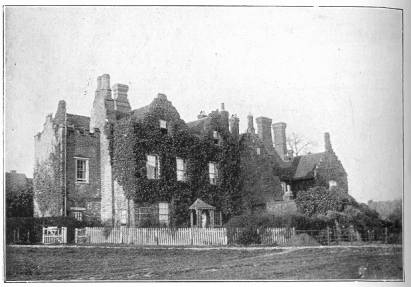
INGATESTONE HALL, ESSEX
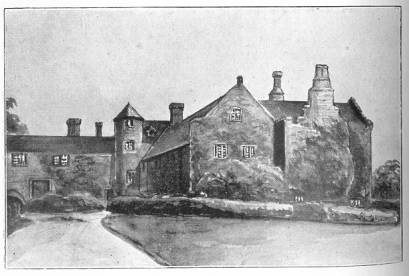
INGATESTONE HALL
An interesting discovery was made some years ago at Ingatestone Hall, Essex, the ancient seat of the Petres. The late Rev. Canon Last, who had resided there as private chaplain for over sixty years, described to us the incidents of this curious "find," to which he was an eye-witness. Some of the floor-boards in the south-east corner of a small ante-room adjoining what was once "the host's bedroom," facing the south front, broke away, rotten with age, while some children were playing there. These being removed, a second layer of boards was brought to light within a foot of the old flooring, and in this a trap-door was found which, when opened, discovered a large "priest's hole," measuring fourteen feet long, ten feet high, and two feet wide. A twelve-step ladder led down into it, and the floor being on a level with the basement of the house was covered with a layer of dry sand to the depth of nearly a foot, so as to absorb any moisture from the ground.[1] In the sand a few bones of a bird were found, possibly the remains of food supplied to some unfortunate priest. Those who climb down into this hole will find much that is interesting to repay them their trouble. From the wall projects a candle-holder, rudely modelled out of clay. An examination of the brick-work in the interior of the "priest's hole" proves it to be of later construction than the rest of the house (which dates from the early part of the sixteenth century), so in all likelihood "Little John" was the manufacturer.
[Footnote 1: At Moorcroft House, near Hillingdon, Middlesex, now modernised and occupied as a private lunatic asylum, ten priests were once concealed for four days in a hiding-place, the floor of which was covered some inches in water. This was one of the many comforts of a "priest's hole"!]
Standing in the same position as when first opened, and supported by two blocks of oak, is an old chest or packing-case made of yew, covered with leather, and bound with bands of iron, wherein formerly the vestments, utensils, etc., for the Mass were kept. Upon it, in faded and antiquated writing, was the following direction: "For the Right Hon. the Lady Petre at Ingatestone Hall, in Essex." The Petres had quitted the old mansion as a residence for considerably over a century when the discovery was made.
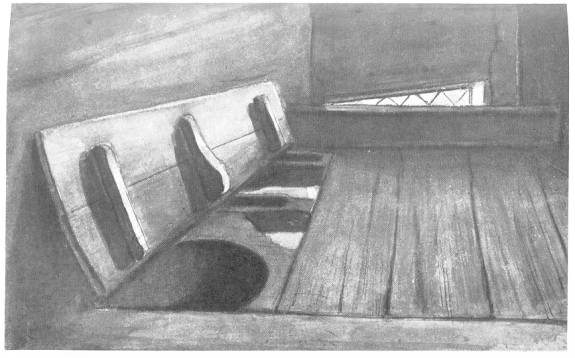
PRIEST'S HOLE, SAWSTON HALL

